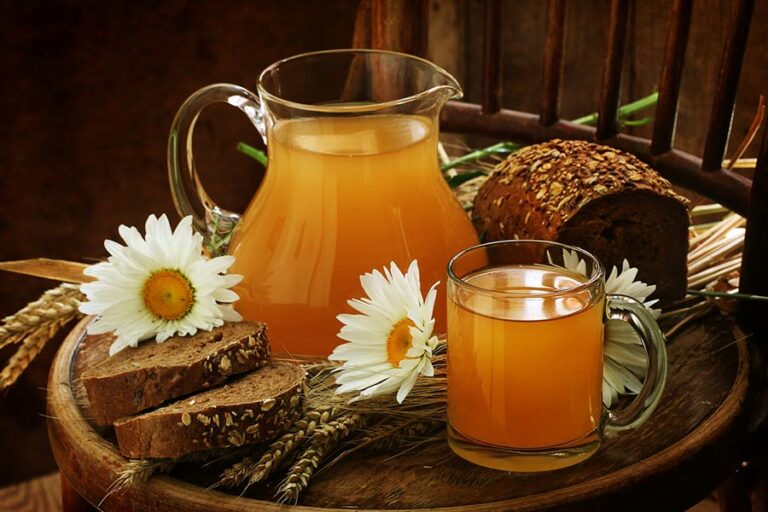Introduction: What are the popular drinks in Russia?
When it comes to popular beverages in Russia, traditional drinks like tea and kvas come to mind. However, Russia is also known for its world-famous alcoholic beverage, vodka. Over the years, Russian drinking culture has gone through significant changes, and many new drinks and cocktails have emerged, making the country’s beverage scene diverse and exciting.
Tea: The most consumed beverage in Russia
Tea is the most consumed beverage in Russia and is an essential part of the country’s culture. Russians drink tea several times a day, and it is often served with sweets or snacks. Traditional Russian tea is brewed strong and served with a slice of lemon and a spoonful of jam or honey. Black tea is the most popular, followed by green tea and herbal tea varieties.
Tea in Russia is more than just a beverage; it is a social activity that brings people together. In many Russian homes, hospitality is shown by offering guests a cup of tea and treats. Tea rooms and tea houses are also popular places for social gatherings and conversations.
Kvas: A traditional fermented drink in Russia
Kvas is a fermented drink made from rye bread and is a traditional Russian beverage. It has a slightly sour taste and is often compared to beer. Kvas is considered a healthy drink, and many Russians believe it has medicinal properties. It is also a popular drink during hot summers as it is refreshing and hydrating.
Kvas is widely available in Russia, and many people make it at home. It is also a common ingredient in many Russian dishes, especially soups and stews. In recent years, commercial kvas producers have introduced new flavors like berry and apple, making it more appealing to young people.
Vodka: Russia’s most famous alcoholic drink
Vodka is Russia’s most famous alcoholic drink and is a significant aspect of Russian culture. It is often associated with celebrations and social gatherings, and it is customary to drink vodka with food. Vodka is usually served in small glasses and chilled.
However, excessive alcohol consumption is a significant problem in Russia, and the government has implemented strict regulations on the sale and consumption of alcohol. The authorities have also encouraged the production and consumption of non-alcoholic drinks.
Kvass-based cocktails: A new trend in Russia
In recent years, kvass-based cocktails have become a new trend in Russia. Mixologists have been experimenting with the traditional drink, adding fruits, herbs, and spices to create unique and exciting cocktails. Kvass-based cocktails are often served in bars and restaurants, and they are becoming increasingly popular with young people.
Mixologists in Russia are also using kvas in cocktails, adding it to ingredients like vodka, lemon, and honey. The result is a refreshing drink that has a unique taste and is perfect for warm summer days.
Conclusion: Other popular drinks in Russia
Apart from tea, kvas, and vodka, other popular drinks in Russia include beer, fruit juices, and non-alcoholic drinks like kompot and mors. Beer is a popular drink among young people, and many breweries produce locally brewed beer.
Russia’s diverse beverage scene offers something for everyone, from traditional drinks to new and exciting cocktails. With a rich drinking culture, it’s no surprise that Russian beverages are enjoyed by people all over the world.

